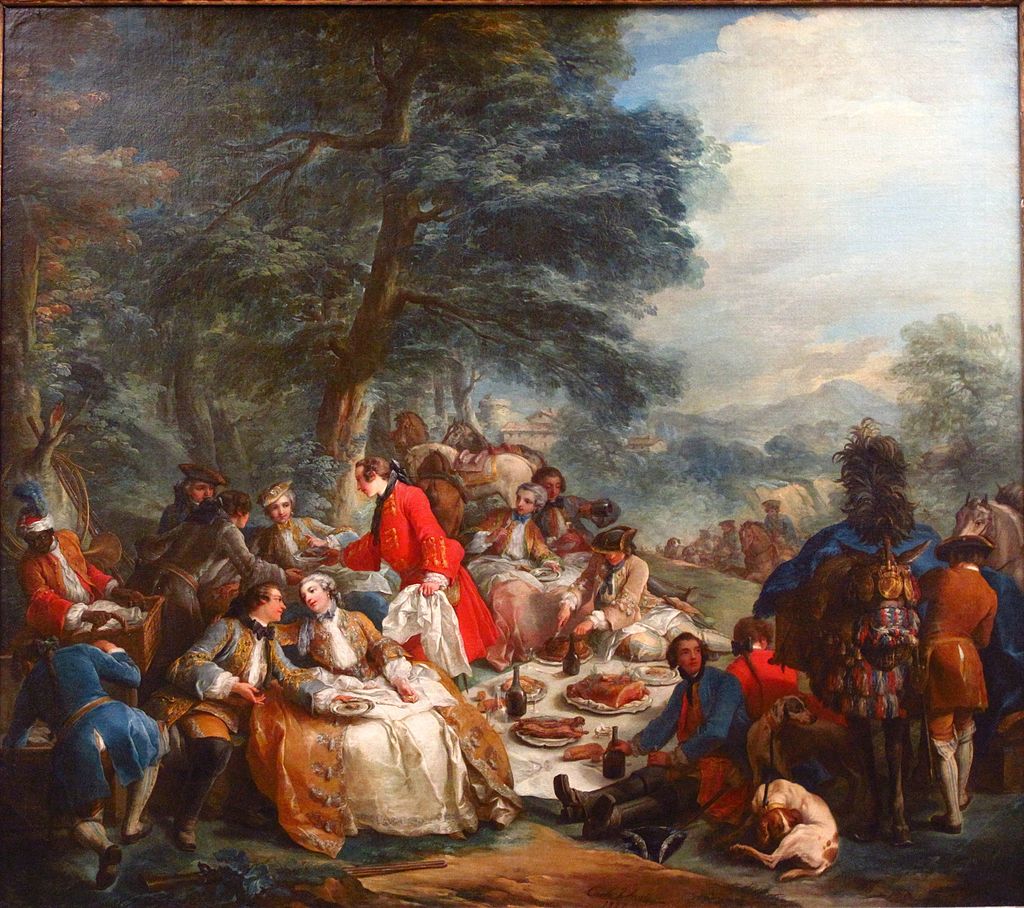 As usual among the French, a halt on the hunt is never referred to as a picnic, although that’s what it is. Van Loo’s Halte de chasse is a narrative of a stop during the hunt, at which the ladies meet the hunters at a predetermined place, called a tryst,...
As usual among the French, a halt on the hunt is never referred to as a picnic, although that’s what it is. Van Loo’s Halte de chasse is a narrative of a stop during the hunt, at which the ladies meet the hunters at a predetermined place, called a tryst,...
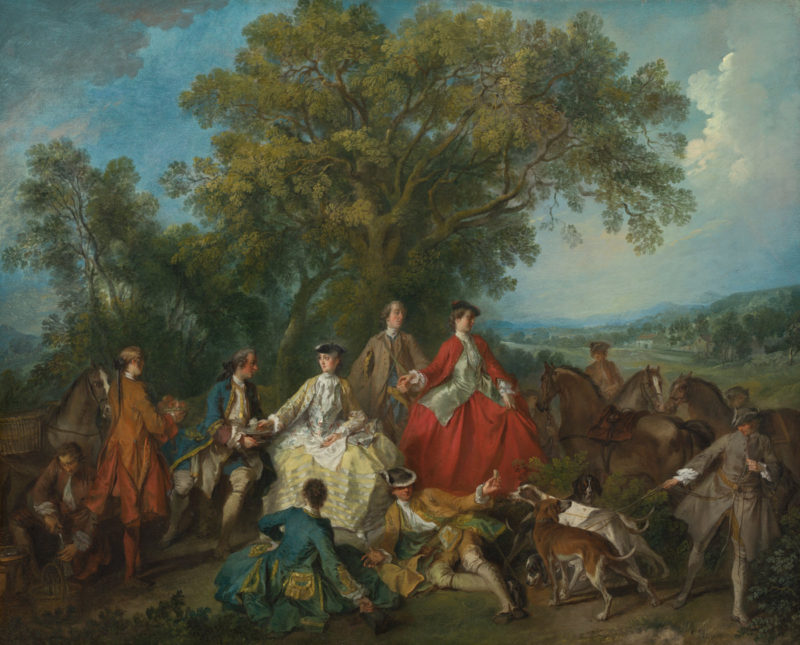 Because the scene is obviously a picnic, the National Gallery of Art’s title, The Picnic after the Hunt, is apt. But Lancret would not have used pique-nique because the French denoted it as an indoor dinner. More likely, he would have titled un repas de chasse, as he...
Because the scene is obviously a picnic, the National Gallery of Art’s title, The Picnic after the Hunt, is apt. But Lancret would not have used pique-nique because the French denoted it as an indoor dinner. More likely, he would have titled un repas de chasse, as he...
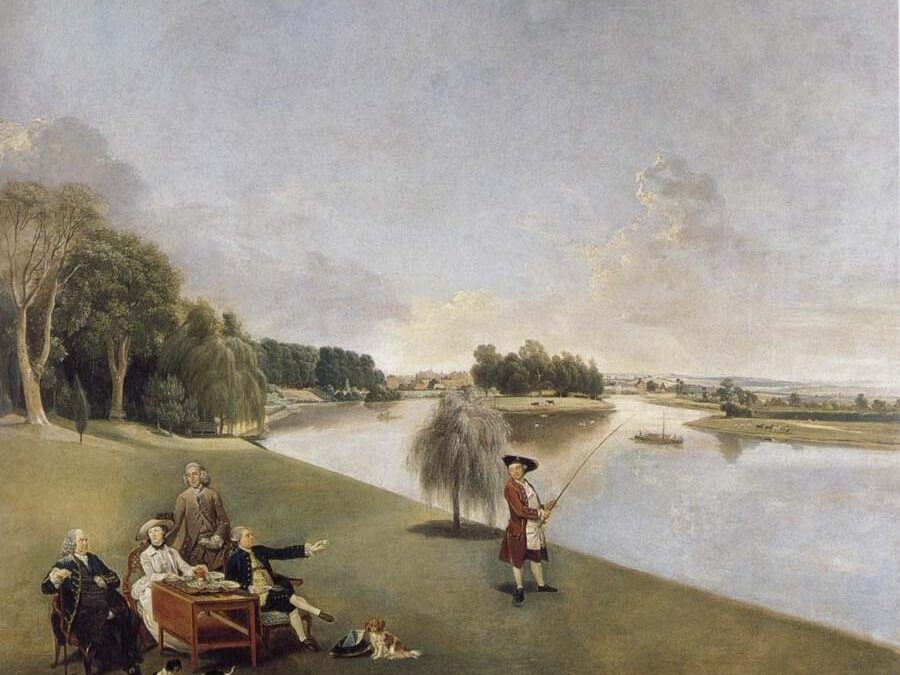 Zoffany’s The Garden of Hampton House, with Mr and Mrs David Garrick Taking Tea is a conversation portrait of the Garricks on their lawn in Twickenham. The occasion is a tea party. The group includes Garrick, gesturing towards his brother David, with the fishing rod,...
Zoffany’s The Garden of Hampton House, with Mr and Mrs David Garrick Taking Tea is a conversation portrait of the Garricks on their lawn in Twickenham. The occasion is a tea party. The group includes Garrick, gesturing towards his brother David, with the fishing rod,...
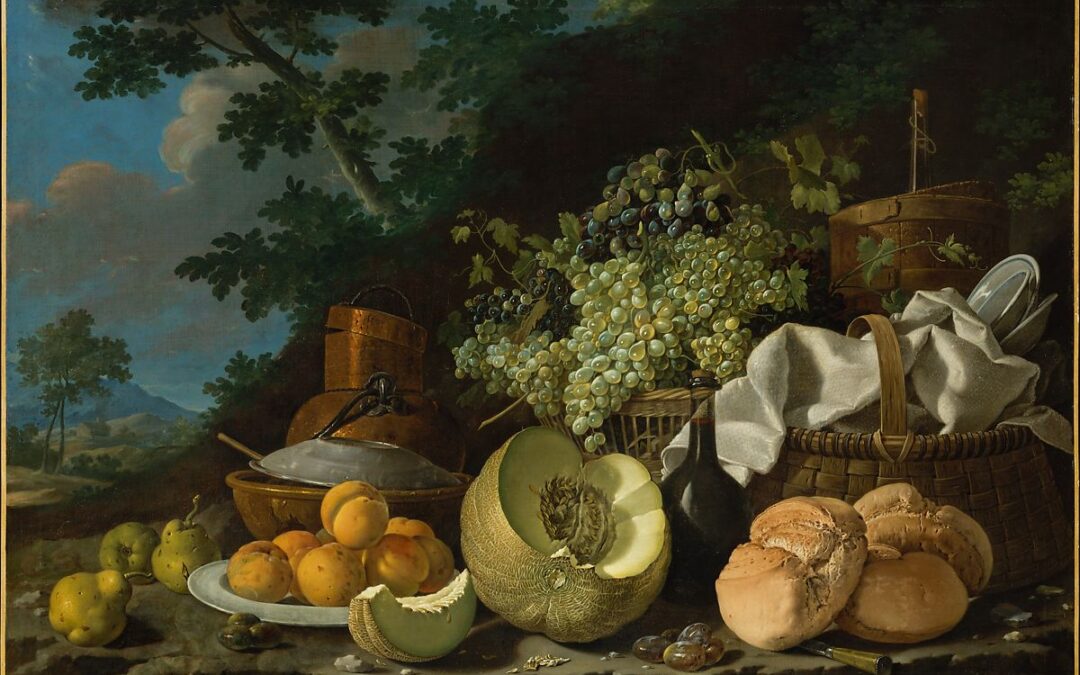 Meléndez was a painter of food, perhaps obsessively so. La Merienda or The Afternoon Meal is among his many still life works there is food ready to be eaten but without any people about to do so. In this instance, it’s a picnic without picnickers though someone...
Meléndez was a painter of food, perhaps obsessively so. La Merienda or The Afternoon Meal is among his many still life works there is food ready to be eaten but without any people about to do so. In this instance, it’s a picnic without picnickers though someone...
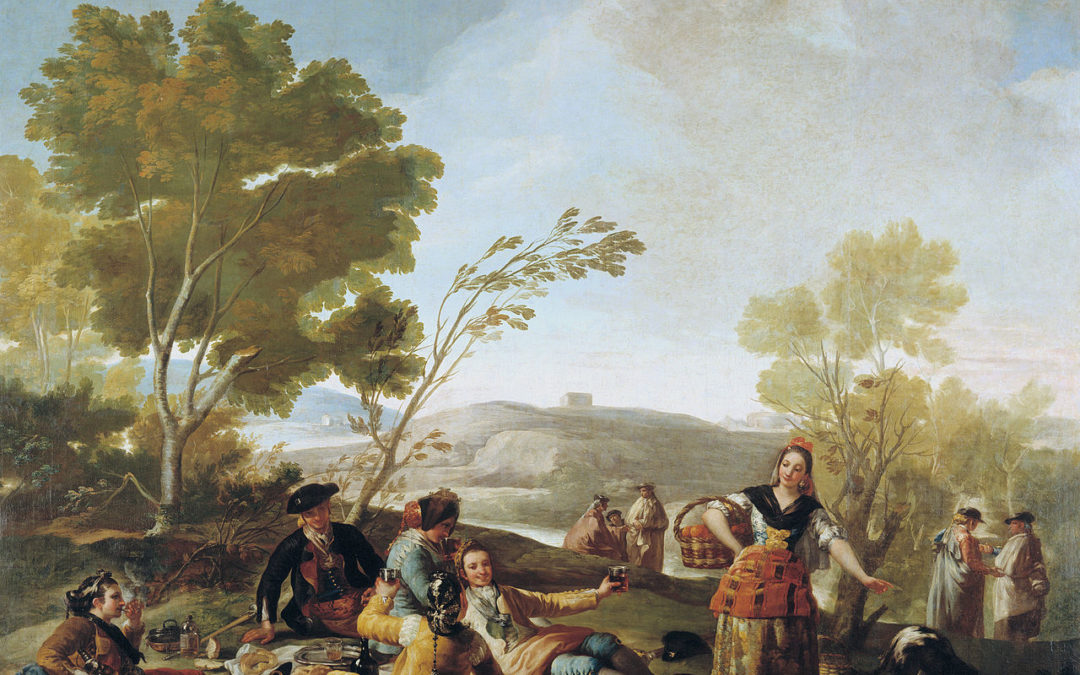 Merienda a orillas del Manzanares [Picnic At the Edge of the Manzanares River] is a painting for a tapestry intended for the dining room of the Prince and Princess of Asturias in the San Lorenzo Palace in Madrid. Goya described the subject as a merienda, a snack, or a...
Merienda a orillas del Manzanares [Picnic At the Edge of the Manzanares River] is a painting for a tapestry intended for the dining room of the Prince and Princess of Asturias in the San Lorenzo Palace in Madrid. Goya described the subject as a merienda, a snack, or a...
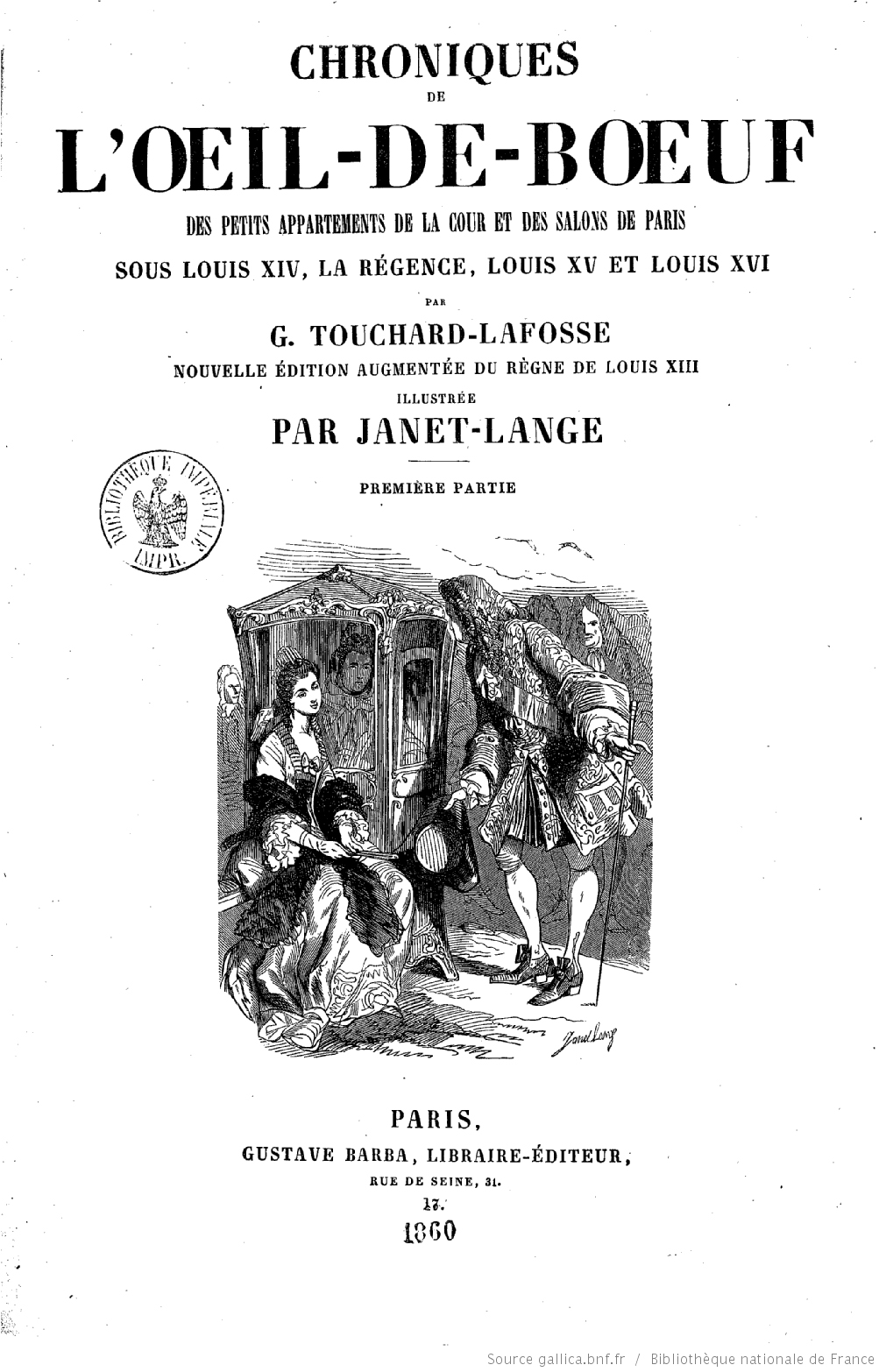 Oeil-de-boeuf is Touchard-Lafosse’s pseudonym used to sign off on his gossip reports about Louis XIV’s court and Parisian society Oeil-de-boeuf is a circular window, often indoors, above a doorway. As a metaphor, it suggests gossip that is sexually tinged or...
Oeil-de-boeuf is Touchard-Lafosse’s pseudonym used to sign off on his gossip reports about Louis XIV’s court and Parisian society Oeil-de-boeuf is a circular window, often indoors, above a doorway. As a metaphor, it suggests gossip that is sexually tinged or...
 Lima was a thriving major colonial town now grown into Chile’s capital and largest city with 10 million. Two centuries ago, an unidentified artist of the Lima School painted A Merry Company on the Banks of the Rímac, a happy picnic in which elegant aristocrats engaged...
Lima was a thriving major colonial town now grown into Chile’s capital and largest city with 10 million. Two centuries ago, an unidentified artist of the Lima School painted A Merry Company on the Banks of the Rímac, a happy picnic in which elegant aristocrats engaged...
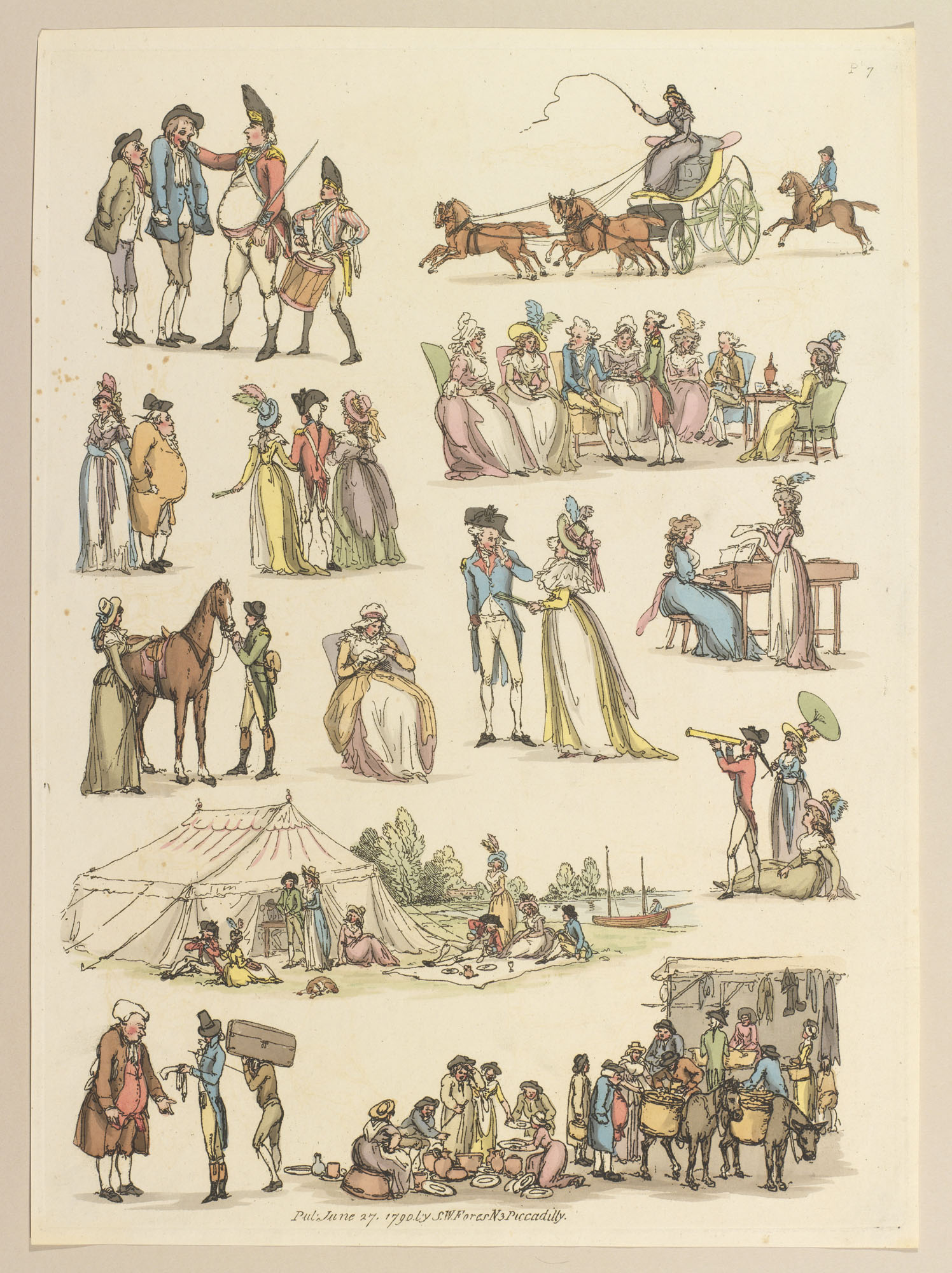 Rowlandson’s 1790 catalog of everyday life among the Brits includes a picnic scene. People looking at it would recognize an alfresco luncheon, but they would not have a name for it. What we call a picnic was unknown in English. Even if Brits knew the French word...
Rowlandson’s 1790 catalog of everyday life among the Brits includes a picnic scene. People looking at it would recognize an alfresco luncheon, but they would not have a name for it. What we call a picnic was unknown in English. Even if Brits knew the French word...
 Lima was a thriving major colonial town now grown into Chile’s capital and largest city with a population of 10 million. Two centuries ago, an unidentified artist of the Lima School painted A Merry Company on the Banks of the Rímac, a happy picnic in which elegant...
Lima was a thriving major colonial town now grown into Chile’s capital and largest city with a population of 10 million. Two centuries ago, an unidentified artist of the Lima School painted A Merry Company on the Banks of the Rímac, a happy picnic in which elegant...
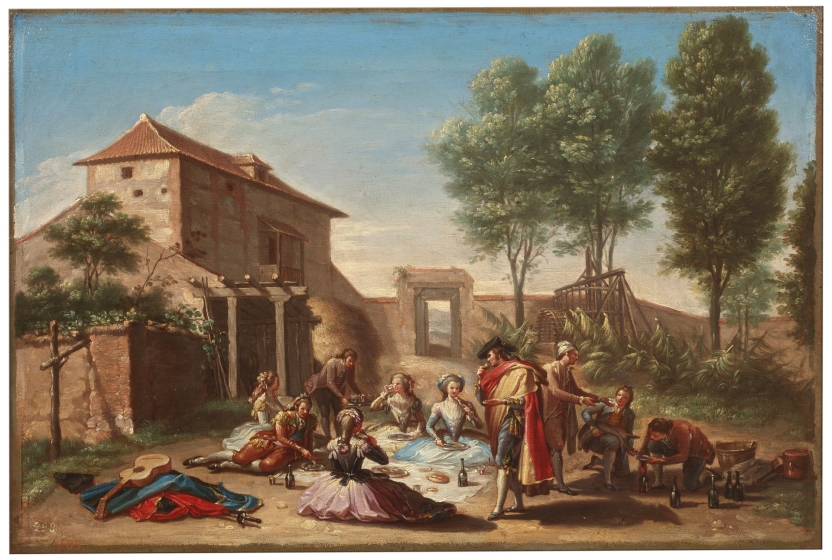 Bayeu’s Picnic in the Country [aka Merienda en el Campo] is a study of a proposed tapestry destined for the royal palaces of the Spanish monarchy now exhibited in the Prado’s Salon de Consejos. The picnickers have gathered around awhile cloth set on the...
Bayeu’s Picnic in the Country [aka Merienda en el Campo] is a study of a proposed tapestry destined for the royal palaces of the Spanish monarchy now exhibited in the Prado’s Salon de Consejos. The picnickers have gathered around awhile cloth set on the...











